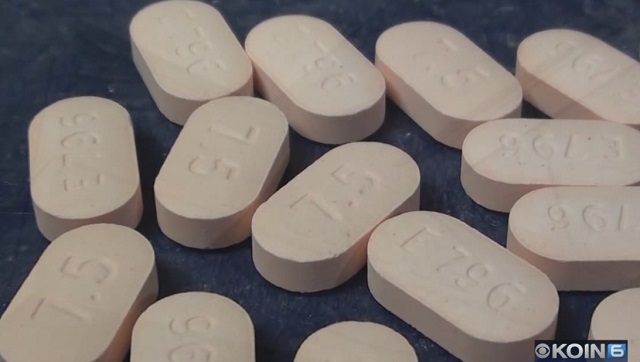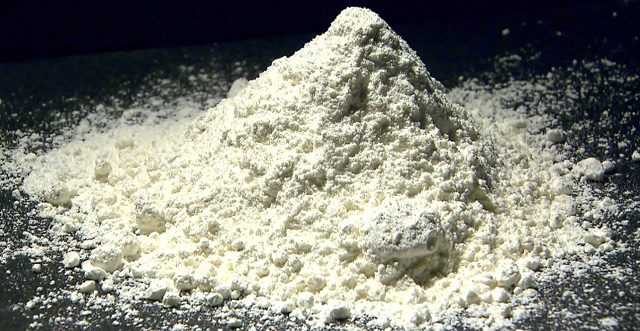BATTLE GROUND, Wash. (KOIN) — Hundreds of thousands of people become addicted to prescription painkillers and an average of 130 Americans die from opioid overdoses every day. According to the Centers for Disease Control, more than 700,000 people died from drug overdoses between 1999 and 2017.
The opioid epidemic is a rising issue in America and, as family nurse practitioner Elizabeth Cook learned, addiction can affect anyone.

“This can happen to anybody,” she said. “This can happen to good people.”
Cook was floored to learn her own daughter was addicted to opioids.
“Honestly my pride said ‘Not my child,'” Cook said.
For years, she prescribed opioids to her patients, feeling it wasn’t her job to judge someone’s pain but to help control it.
“We think we’re doing the right thing, but I’ve been part of the problem,” she said. “I have created some of this issue and for that, I’m truly sorry and so now I’m really trying to make a difference.”
It’s something she’s pouring her heart into after learning her own daughter is an addict who abused powerful prescription painkillers.
“My heart was crushed,” Cook said.
It started when her daughter was 19 and living on her own.
“She told me it started after she got a prescription from her dentist, she had her wisdom teeth pulled and then she had a tooth impaction and instead of giving her a couple, they gave her a full bottle of NORCO — Vicodin.”
When the pain was gone, Cook’s daughter kept taking the pills, eventually turning to drug dealers to get more and more.
She bought pressed pills she thought were Oxycontin but were actually cut with fentanyl.
“Fentanyl is 100 times stronger than heroin,” Cook said.
Fentanyl is a synthetic opioid often used to manage pain for cancer patients. The Drug Enforcement Administration said many overdoses happen because people think they’re taking pure heroin, but the added fentanyl makes it much stronger.

Looking back, Cook said her daughter changed physically and emotionally. She was depressed, anxious and pulled away from her family.
“When she’d come home to visit, she’d lost a lot of weight and she said ‘Well I’m working, I don’t get to buy a lot of food.’ And there was always an excuse for something,” Cook said. “And of course I didn’t want to believe anything other than what my daughter told me.”
Understanding the opioid epidemic
“When your child calls and says they’re hungry, you want to buy them food. And when they say they don’t have a place to stay because they can’t pay their rent, you want to give them your home. But what I realize is that I was enabling and it wasn’t until I really took a good look, my husband helped me a lot with that in saying there’s a problem here,” Cook said.
Several months ago, the entire family decided no more.
“We sat her down and said ‘Look, we know what’s going on and we want you to change. To get some help.’ We had an intervention,” Cook said.
It was agonizing to tell her daughter she couldn’t come home, she said.. She told her she couldn’t come home until she was ready to change and get her life back.
“It was the hardest thing I’ve ever done in my life.”
After about a week, Cook’s daughter agreed to go to detox and after that, Cook drove her to Yakima for an in-patient treatment center.
“So she graduated and she said ‘Mom, can I come home?’ and I said, ‘No, you gotta keep doing this,'” Cook said.
Her daughter is continuing with out-patient treatment and living at Oxford House, a sober house with curfews and drug test.
“But this isn’t the end,” Cook said. “My daughter is going to be a lifelong addict and so I’ve got to be a lifelong crusader for this. I’ve got to stop the social stigma of it.”
Alcohol and drug treatment links — Clark County
Addiction services — Multnomah County
Cook started studying addiction and alternative ways to treat pain but she still believes there’s a time and a place for opioids.
“I don’t think we need to withdraw pain meds from people who are chronically in pain or suffering,” she said. “But I think we all need to be really aware of the effects, the consequences. We need to educate our patients before we give them and say there is no safe opioid. Anybody can get addicted to this.”
She said medical professionals need to help patients in pain and limit prescriptions — not as punishment, “but to help you and do the right thing.”










